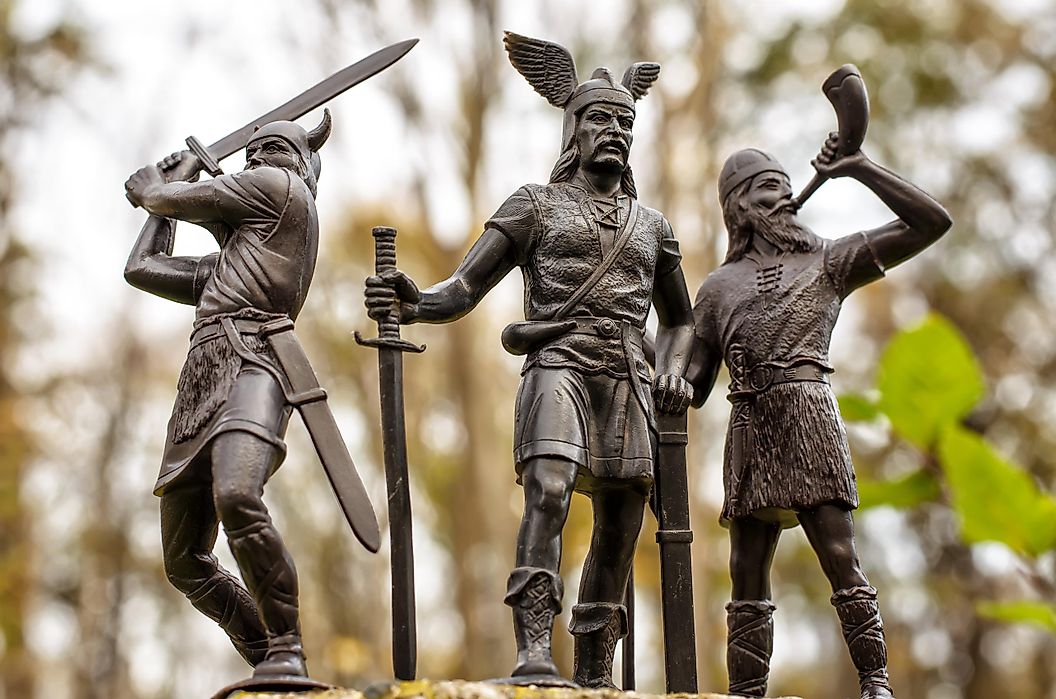
Statue of Scandinavian God Odin with two Vikings.
Editorial credit: drumdredd777 / Shutterstock.com
Editorial credit: drumdredd777 / Shutterstock.com
The stereotype of a Viking is usually that of a bloodthirsty brute hellbent on the destruction of the civilized world. While this image is often exaggerated to the point of parody in modern television and film, this over-the-top representation is still based on some truth.
The Vikings did not keep records like the Christian kingdoms of Dark Ages Europe. So, we do not really have a good idea of how the Vikings viewed themselves or the many peoples with whom they came in contact. The only surviving historical records are mainly written by the people who were often victimized by Viking raids and invasions. As you can imagine, these Medieval chroniclers' opinions of the Vikings are far from favorable.
The first recorded Viking raid occurred on Lindisfarne island in modern-day England. Lindisfarne was home to an isolated monastery filled with a small population of monks and townsfolk. Churches and other religious buildings at that time would have been among the few places where wealth and valuables would have been stored. An island filled with riches, being defended by unarmed monks and peasants, meaning that just about anyone could have come and taken what they wanted. And that is exactly what the Vikings did in 793 AD. Much of the remote settlement was destroyed, and its population was either killed in the raid or enslaved.
Read the rest of this article...